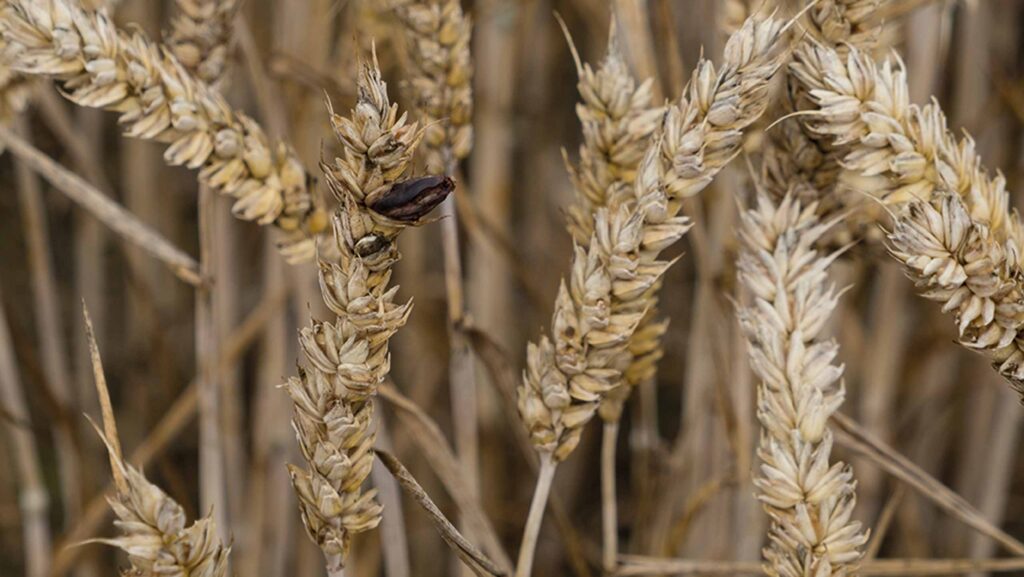Warning as high levels of ergot found in wheat
 © Blackthorn Arable
© Blackthorn Arable Widespread ergot contamination in wheat is being reported by Camgrain this harvest, with every other load coming into the farmer-owned grain storage and processing facility containing the distinctive purple-black bodies or sclerotia.
In a normal year, that would be more like one in every 50-100 trucks, showing just how prevalent ergot is this year after persistent wet weather and grassweed control difficulties, reports Camgrain’s chief executive officer Simon Willis.
“It’s the main quality issue in 2024,” he says. “We are finding both cereal ergot and blackgrass ergot as trucks come in, at much higher levels than usual.”
See also: Harvest 24: Warning over increased cereal ergot risk to livestock
While cereal ergot is easily spotted, being larger than the grain it replaces, grassweed ergot is much smaller and comes in a greater range of colours and shapes.
Both occur when open flowers are infected in the spring by wind-borne spores, allowing the fungus to grow in place of the grain or seed.
Simon explains that the mills have zero tolerance to ergot in grain, so it must be removed before it can be marketed.
“For cereal ergot, that’s done by colour-sorting technology, while blackgrass ergot is removed by aspirating and filtering the grain.
“Fortunately, we already have the facilities here to deal with ergot. We are also installing two new colour separators, as it’s an issue which is unlikely to go away.”
While it has little effect on yield, ergots produce toxic alkaloids which can affect both human and animal health if ingested.
Historically, ergotism caused hallucinations and convulsions, gangrene and occasionally death.
Maximum limits in grain were tightened up in 2021, but most outlets have a rigid zero tolerance policy.
The Agricultural Industries Confederation (AIC) contract stipulates that feed grain shall not contain more than 0.001% ergot by weight, and other grains cannot contain any ergot at all.
Harvest progress
Camgrain takes in up to 380,000t of wheat during harvest and had already received 220,000t by the end of last week, putting the wheat harvest two-thirds of the way through in East Anglia.
Simon expects the wheat harvest to be largely completed by the bank holiday weekend, with growers then moving on to spring crops.
“The crop is dry and the quality isn’t bad – proteins have been a bit diluted, as you would expect after such a wet year,” he says.
Yields have been better than many feared earlier in the year. He predicts that the average farm will be down 5-10% on output.
“Interestingly, we have received a bit more oilseed rape than we expected and all of the winter malting barley that we anticipated.”
Farmer experience

John Jeffries © Camgrain
Cambridgeshire arable farmer John Jeffries is shocked by the high level of ergot contamination he is finding in winter wheat this year.
A 1kg sample of Dawsum feed wheat contained as many as 90 ergots, he reveals, far higher than he has seen before and a major concern, given unpredictable weather patterns and economic pressures.
A Camgrain member and director, John makes the point that his grain would be unsaleable if he didn’t have access to the cleaning and processing facilities that the co-operative has invested in.
“It will be an extra cost to have it taken out, but it’s worth doing. Dawsum is one of three varieties that are included in the Clean Wheat Contract, which supplies the breakfast cereal market and earns us a premium.
“I wouldn’t be able to sell or market it otherwise.”
Grassweed control has been a challenge on the 200ha farm at Little Gransden this year, confirms John.
Torrential rain saw herbicide being washed away, and he is finding both cereal and blackgrass ergot in most of his wheat.
“Although we have a regenerative system, I will have to plough some fields this year to help with blackgrass,” he says.
“That should help to bury any ergots left on the soil surface.”
